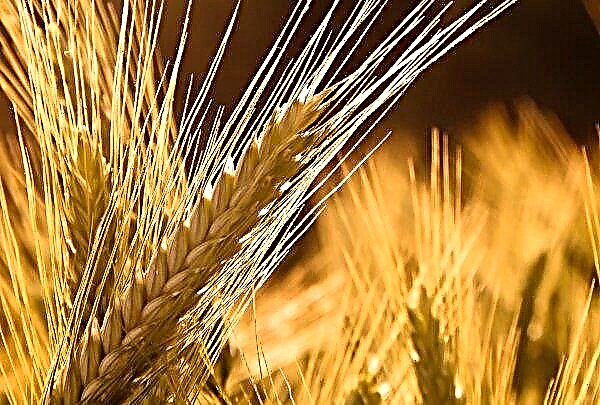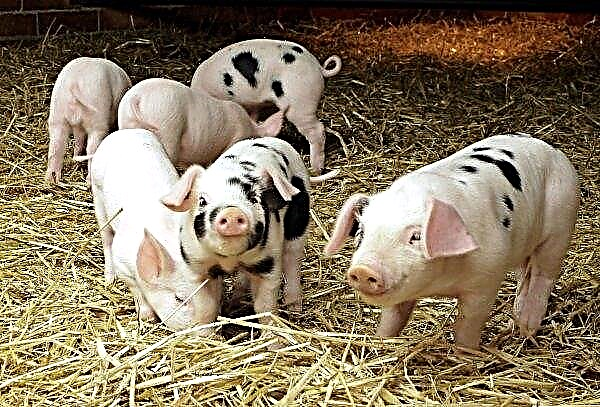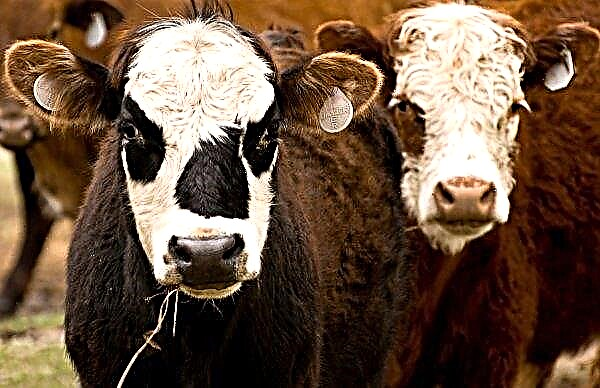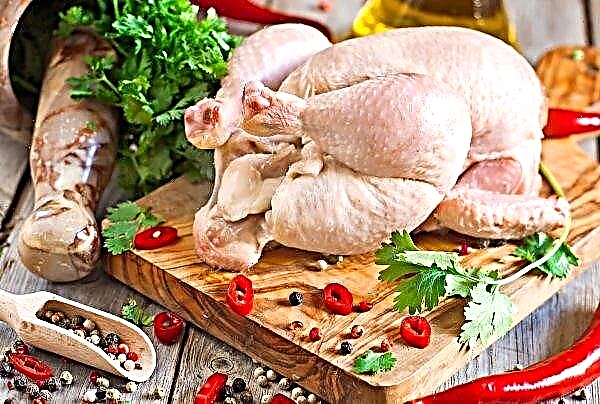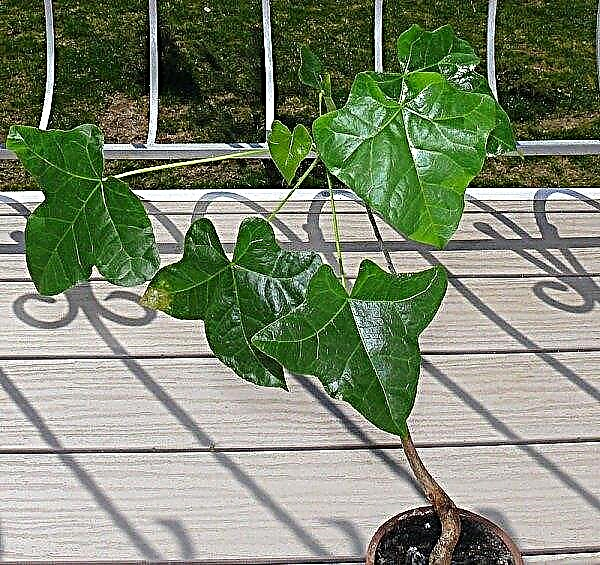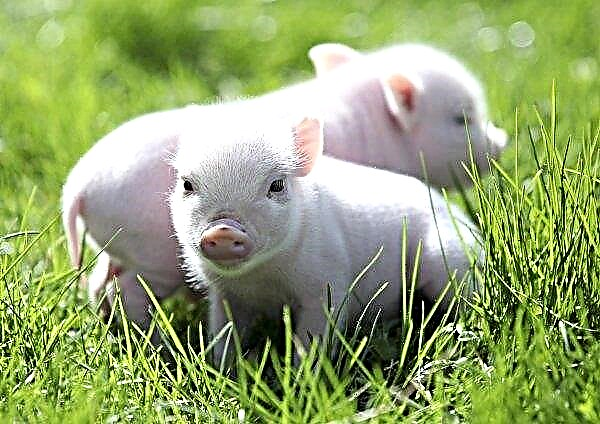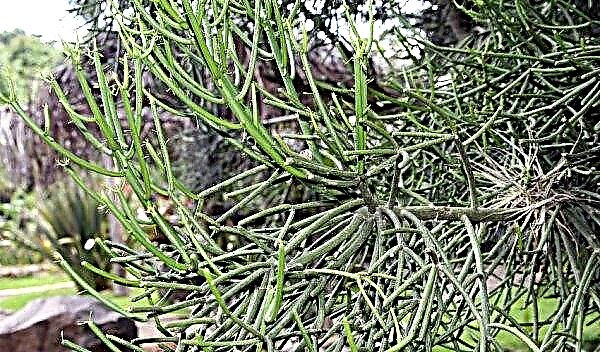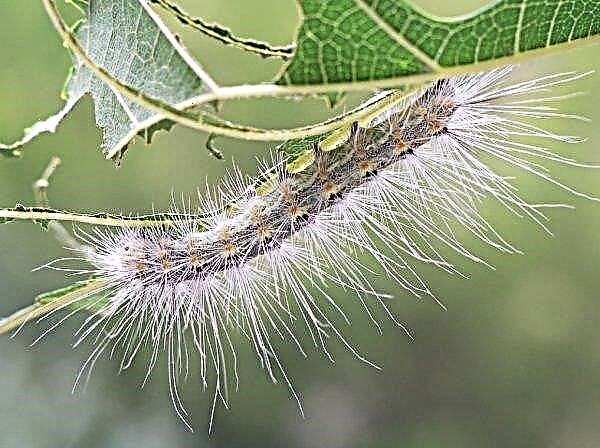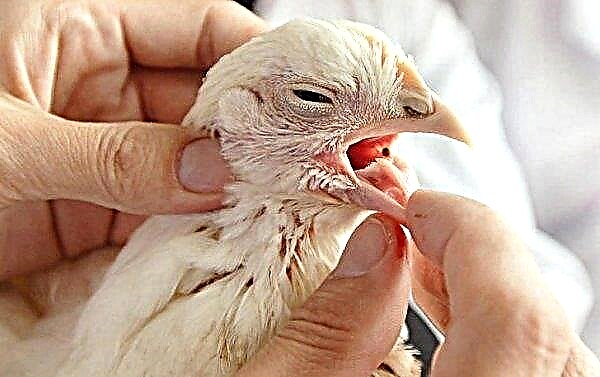Harvest and delicious variety of Belarusian origin Janka was created not so long ago - in 2012. Its even identical tubers are distinguished by good keeping quality and presentation. About the features of this variety, technical characteristics and growing conditions, read in this review.
Origin of the variety
The variety was bred in Belarus recently. The purpose of selection is to obtain a table variety, zoned for central and north-western areas. This potato can grow on any type of soil and is intended for both private households and commercial use.
Description and characteristics of the variety
The variety is mid-season. A finished crop can be expected for 100 days of cultivation. Yields in different sources indicate different: 190-315 kg / ha. Probably, this parameter is more dependent on the growing methodology used and climatic conditions. A distinctive feature of tubers is approximately the same size and the absence of small specimens. The weight of the potato is 80–110 g. About 10 pieces are formed under their bush.
Yanku is distinguished by good product characteristics: smooth, identical, round tubers, the safety of which is 96%. Transporting well and can be packaged right at the time of harvest.Did you know? To popularize potatoes, in France in the 19th century, the scientist and agronomist Antoine Permantier placed a guard around the potato fields so that they would protect but accept bribes and allow the peasants to steal it.
The high starch content (18%) makes the variety attractive to catering. Yanka is easy to boil, has a pleasant taste, ideal for cooking french fries or chips.
Tuber characteristics:
- oval shape;
- the average size;
- white flesh;
- yellow smooth peel;
- dense consistency.

Advantages and disadvantages
- The advantages of the variety are:
- good taste characteristics;
- high commercial properties;
- good productivity (up to 300 c / ha);
- adapted to temperate and cool summer areas;
- resistance to root pests, late blight and potato cancer.
- A feature of the variety is its good adaptation to cold summers, but this also causes the disadvantages of the variety:
- yield reduction at low air temperatures;
- medium scab resistance.
Planting and growing potatoes
The technology of planting potatoes is:
- proper site selection;
- preparation of seed material;
- preparation of soil for landing;
- planting tubers.
Did you know? Potato contains almost all the substances necessary for a person to survive. To prove this, the Executive Director of the Washington State Potato Commission ate nothing but this vegetable for 60 days.
Yanka can grow in different soils, but responds very well to fertilizer application, so when planting the soil is mixed with organic matter (rotted manure) or industrial synthetic fertilizers. Then, watering, hilling and pest control measures will be included in the range of measures for cultivation.
Optimal landing times
The sowing calendar of any country will show you the optimal planting dates: usually this is early spring, March or April. If the snow has melted in your region, the frost has ended and the air temperature has reached + 13 ° С, then it is time to plant potatoes.
Seeds of frost-resistant varieties can withstand frosts only if seedlings have not appeared, therefore, planting is carried out from March until the third decade of April.
Important! Potatoes have a high glycemic index (about 95GI), so diabetics should eat it in moderation.
Crop rotation rules
Crop rotation technology is needed to help the farmer get a high yield without the use of herbicides - this can be called ecologically safe farming technology. In addition to yield, crop rotation reduces pest populations.
Basic rules for potato crop rotation:
- A complete crop rotation takes 3-4 years.
- Precursor crops: legumes, pumpkin, zucchini, cabbage, green manure.
- Plants that have common pests with potatoes are strictly prohibited for the previous sowing: solanaceous plants - peppers, eggplant, tomatoes, potatoes.
- Do not allow soil compaction. In order to maintain its friability, in the autumn “green fertilizers” are planted on the site.

The term of 3-4 years is established due to the fact that the main pests of root crops have just such a development cycle. So, the Colorado potato beetle can be in the ground without any particular dynamics for a whole year to become active for the next growing season.
Soil care is an indispensable element of crop rotation. Field plowing must be carried out in the spring in order to weaken the root system of weeds and reduce the population of overwintered pests.
Important! If the potato is exposed to sunlight, then plant poison forms in it — solanine. In order to avoid poisoning, cut off the green part of the peel of the root crop before use.
Soil requirements
The rounded shape of root crops provides loose light soil. Even if the soil is dense, then when preparing trenches for landing, it should be well dug up so that there are no large lumps that can deform the tubers. Grown on heavy soils, they acquire a flattened shape.
Soil characteristics:
- nutritious;
- with an acidity level of 5.5–7 pH;
- drained.
To increase soil nutrition, fertilizers are applied during planting. For airiness and friability, you can make sand, peat or other bulk materials.

Preparing the soil for planting is as follows:
- choosing a sunny area, dig up the soil, removing weeds;
- form landing trenches - their depth is about 30 cm, trapezoidal shape with a smaller lower base;
- part of the soil removed from the trench is mixed with organic or synthetic fertilizers;
- another part of the soil will be used to fill the trench after planting and during earthing up.
Preparing planting material
Farmers practice 2 main varieties of planting:
- whole tubers;
- parts of the tuber.

The tubers are cut lengthwise. To prevent infection of the tuber with putrefactive bacteria, the incision sites are treated with ash and dried for several days. This process can be combined with germination. Air temperature at this time can be about + 14 ° С and higher, and humidity - about 80–90%. Germination allows you to accelerate the growing season and reduce the ripening time of the crop. Its duration is about 2-3 weeks. Therefore, if planting is planned for late March, then you need to germinate potatoes at the beginning of the month.
Did you know? NASA has proven that potatoes in space are not only able to grow and supply humans with food, but also effectively purify the air of human exhaled gases.
Landing technology
Technologically, planting consists of preparing a pit and making planting material along with fertilizers.
Landing Instructions:
- At the bottom of the prepared trench, a part of loose soil is poured (3-4 cm).
- Sowing material with a distance between potatoes of 25-30 cm is laid on top. If the distance between trenches is less than 0.5 m, then the distance between individual tubers should be large - up to 40 cm.
- Tubers need to be covered with a layer of fertile soil. For its preparation, rotted manure is mixed with soil in the amount of 2-3 buckets per 1 m².
- Here you can add 300 g of urea per 1 m² in order to ensure a sufficient amount of nitrogen. If green fertilizers (cereals, legumes or other plants) were planted in the fall, then there is no need for nitrogen - it will be released into the soil from the green mass that the cover plants formed.
- The top layer is ordinary soil, with the help of which the trench is leveled with the surrounding landscape.
- If you still have unused soil, then after emergence, it can be used for hilling.

Potato care after planting
The main activities for the care of potatoes:
- watering;
- hilling;
- weed removal;
- disease prevention.
Hilling and loosening the soil
Hilling is the increase in an earthen mound around a potato bush. The process is necessary to increase the volume of the root system. Tubers are a thickened part of the root: accordingly, the more roots and the more nutritious the soil, the greater the yield, which is especially important for varieties such as Janka - dependent on soil nutrition.
The first hilling is carried out when the potato sprouts reach a height of 10-15 cm. It is believed that the larger the earthen hill, the better.Did you know? Potato and tomato belong to the same family Solanaceous, so their fabrics are compatible. This allowed the American breeder Luther Burbank to obtain a chimera plant with root crops at the bottom and tomato fruits at the top.
Proponents of this type of hilling provide the main advantages of the method:
- the plant is less exposed to leaf pests;
- increased trunk area contributes to the formation of additional roots and tubers;
- this stimulates the growth and development of the bush.
The second hilling is carried out when the sprouts begin to bloom. At this time, tubers develop intensively - 3 weeks after the first procedure.
Hilling can be combined with loosening the soil between the rows and removing weeds. Loosening is mandatory at the beginning of the season.
At an early stage of growth, cultivated plants are especially in need of nutrients. To prevent competition with weeds, regular removal of such vegetation is recommended. This can be done by periodically treating the crops with a garden hoe or by covering the place for planting potatoes with mulching materials. The layer will inhibit weed growth, retain moisture and maintain a loose soil condition. If the weeds are small, then they are removed manually - so the risk of damage to the delicate freshly formed roots is reduced.
Watering
If the site is located on a hill, the soil quickly lose moisture, so potatoes are watered 2-3 times a week. Bushes located in the lowlands are watered no more than 1 time per week to prevent excess moisture and the development of putrefactive bacteria.
Water the plants before the soil finally dries to a depth of 5-10 cm. Stop watering in the second half of summer, when the stems begin to dry out - this will help the tubers to ripen before harvesting.
Basic watering rules:- Before the first hilling, watering is not carried out. At this time, enough soil spring moisture in the soil.
- An excess of moisture leaches fertilizers into deeper layers, where the plant cannot get them from, so they moisturize the soil with no more than 30 cm depth.
- Dry soil, before the first hilling, contributes to a wider development of the root system.
- Even watering guarantees the development of identical tubers, so do not create periods of drought for plants.
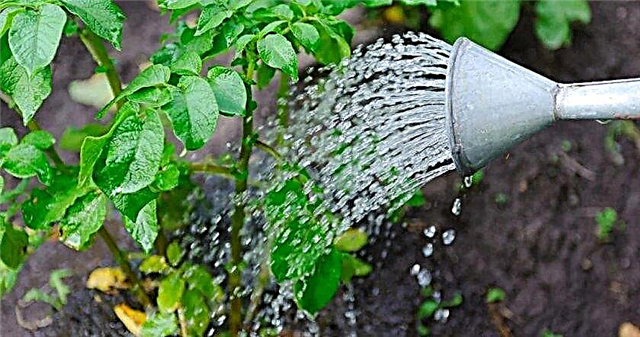
Top dressing
Organic farming methods involve fertilizing in one of 2 ways:
- planting ground crops (cereals, legumes) in the fall after harvest and before the planned planting of potatoes;
- the introduction of manure, compost or other organic fertilizers.
The crops planted in the fall in winter form a good grassy aerial part. They will not have time to bloom to frost and use the accumulated substances. When digging a site a month before planting potatoes, they will be brought into the ground and will be an excellent source of nitrogen and other nutrients for tubers. Their root system loosens the soil, making it easier, which is useful for tubers. Grain, bean and cruciferous plants are planted as cover crops.
Manure application is practiced during planting. It must be rotted - lying after receiving at least 6 months. Fertilizer is mixed with soil and applied over the tubers. Manure is a good source of potassium. You can also add bird droppings or compost. To enrich the soil with phosphorus, bone meal is used.
Chemical fertilizers can also be applied to the soil instead of organic. A balanced fertilizer is suitable for potatoes, in which potassium, phosphorus and nitrogen are in equal proportions. Use 7 kg of fertilizer on a 300 m² plot. They need to be mixed with the soil when planting.Important! It is believed that synthetic water-soluble fertilizers get to the plant faster than the same substances released from organics, so some farmers prefer to use both methods for feeding potatoes.
During the growing season, farmers add bone meal and algae extract to the soil or fertilize them with manure every 2–3 weeks. This is important between the emergence of seedlings and before flowering. Inorganic fertilizers are applied 6 weeks after planting again in the same composition, and then again after a month.
The introduction of nitrogen is relevant for the first 50 days after planting. The application volume is from 80 to 140 kg / ha. The introduction of potassium is important for the formation of tubers; its rate is 5–10 kg per 1 m².

Grade Diseases and Pests
Diseases appear spots on the leaves or stems, plaque, falling leaves or inflorescences. Pathogens are microorganisms, viruses or fungi that penetrate plant tissue through damage. Therefore, pests are twice dangerous: they not only damage the leaves, but also cause the pathogenic microflora to enter.
Optimal conditions for the spread of bacteria and fungi:- high humidity (up to 90%);
- air temperature above + 18 ° C;
- thickening of landings and poor air circulation.
The death of the affected parts of the plant tissue takes from 2 weeks to 2 months. The spread of spores and fungi can take no more than a few days. Dry weather stops the spread of infection.
Disease Prevention:
- crop rotation compliance;
- planting only healthy planting material;
- treatment of tubers with fungicides before planting, which will inhibit the development of putrefactive fungi;
- destruction of infected plants at least 3 m from potato crops.
The Yanka variety is resistant to late blight and other leaf diseases, therefore, prevention should be focused on protection from ground pests, and this helps farmers to comply with crop rotation rules. Preventive treatment of crops is carried out with insecticides. Usually on the packaging of any drug it is indicated against which groups of insects and in what dosage it should be used. To notice their appearance in time, farmers use various traps.
If pests are found, the following measures are applied:- When Colorado potato beetle use drugs "Aktara", "Prestige". They provide good protection of tubers for several months, so processing is usually carried out no later than 2 months before harvesting.

- Nematodes Are small worms that also damage tubers. They live in colonies and breed quite actively. An excellent folk remedy for them is treating the soil with hot water to a depth of at least 20 cm. If you cover the crops with polyethylene, then under the film the soil temperature will increase, which also helps to combat pest. Of the chemicals used "Karbofos", "Carbation". You can also plant calendula in the aisles - its essential oils inhibit the development of nematodes.

- Another tuber pest - wireworms (nutcracker beetle larvae). These are small brisk worms with a strong copper-colored chitin cover. The best way to deal with them is to plant mustard in the autumn.

The variety is resistant to scab, blackleg and late blight. But diseases can occur due to weather conditions - these are temperature changes at high humidity. If it is impossible to reduce the risk of bacteria, then prophylactic spraying with bactericidal drugs is used. If damaged leaves or stems are found, they must be removed before processing.
Did you know? Today, several genetically modified potato varieties have been developed in the world: new species are resistant to pests, well adapted to changing climatic conditions. But, having gained resistance to some pests, they may be more likely to be attacked by others.
Harvesting and storage
Yankees are harvested 100 days after emergence. It is very easy to make sure that the crop is ready: the drying of the stems indicates that the potato has ripened. After that, you need to give the tubers another 2-3 weeks so that the peel “freezes” and becomes suitable for winter storage.
Harvesting is carried out in sunny weather. If it rained the day before and the soil was moist, then the tubers are dried before being stored. They are stored in wooden or plastic crates in a cool, dry room at a temperature of about + 5 ° C and humidity not higher than 65%. The shelf life of the variety is 96%.

The Janka variety is excellent for growing in temperate climates. It tolerates bad weather conditions and maintains high yields. Caring for it is simple, the only thing worth paying attention to is a sufficient amount of fertilizer in the ground.









